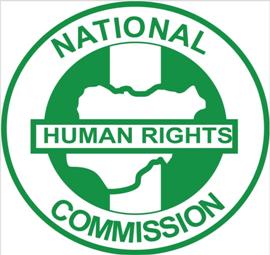
Increased borrowings: The threat to government acquired loans amidst systemic gaps
The outcry over borrowing in Nigeria has continued to generate traffic. The concern became more disturbing when it was revealed recently that over 90 per cent of the Country’s revenue now goes into debt servicing. Following the combined approval of N16.39 trillion for the 2022 Appropriation Bill by the Federal Executive Council (FEC), and the Senate, the Federal Government on Wednesday had declared its intention to borrow additional N16.3 trillion to finance the proposed 2022 budget deficits.The development, despite recent outcry greeting the increasing turn to borrowing, implies the Federal Government would be in for series of loan acquisitions in 2022.
The Minister of Finance, Budget and National Planning, Mrs. Zainab Ahmed who gave the hint of the borrowings while briefing State House correspondents at the end of the Wednesday’s Council meeting presided over by President Buhari, at the presidential Villa, Abuja, disclosed that the resultant deficit of N6.258 trillion of the proposed budget will be financed by new borrowings of N5.012 trillion (of which domestic – N2.506 trillion and foreign – N2.506 trillion); drawdowns on Project-tied Multilateral/Bilateral loans – N1.156 trillion; and Privatization Proceeds of N90.73 billion.” The Minister had maintained that it was necessary that the government would continue to borrow in order to fund developmental and infrastructure projects as it does not get enough from its revenues.
Arguing to justify the borrowing, she had said: “Government has been borrowing before this administration and continues to borrow and it is important that we borrow to provide developmental projects in the form of roads, rails, bridges, power and water for sustainable development in this Country. If we just depend on the revenues that we get, even though our revenues have increased, the operational expenditure of government, including salaries and other overheads, is barely covered or swallowed up by the revenue. So, we need to borrow to be able to build these projects that will ensure that we’re able to develop on a sustainable basis.
“Nigeria’s borrowing, has been of great concern and has elicited a lot of discussions. But if you look at the total size of the borrowing, it is still within healthy and sustainable limits. As at July 2021, the total borrowing is 23 per cent of GDP. When you compare our borrowing to other countries, we’re the lowest within the region, lowest compared to Egypt, South Africa, Brazil, Mexico, the very lowest, and Angola. We do have a problem of revenue. Our revenues have been increasing. We just reported to Council that our revenues from non-oil has performed, as at July, at the rate of 111%, which means outperforming the prorated budget..But our expenditure, especially staff emoluments have been increasing at a very fast rate making it difficult to cope with funding of government. So, what we have to do is a combination of cutting down our cost, as well as increasing revenue to be able to cope with all that is required for government to do, including salaries, pensions debt service, as well as capital expenditure.”
In the breakdown, she disclosed N3.61 trillion of the N16.39 trillion, will be going into Debt Service in the proposed 2022 budget. Also were Overhead costs of N792.39 billion (inclusive of N451.0 billion for the 63 GOEs); and Capital expenditure (inclusive of capital component of Social Investment Programme, capital in Statutory Transfers, capital of 63 GOEs, Capital Supplementation as well as Grants and Donor funding) of N5.35 trillion (inclusive of N647.08 billion for the 63 GOEs). Also, were Maturing Debts of N292.71 billion Naira. Others are Recurrent Expenditure (Non-Debt) of N6.83 trillion, inclusive of N350.0 billion for the recurrent component of Social Investment Programme; and Aggregate Capital Expenditure of N5.35 trillion, inclusive of GOEs’ capital expenditure, multilateral/bilateral loan funded projects, Capital Supplementation and Grants/Aid funded projects. According to her, this represents 33 per cent of the expenditure budget.
While reactions have trailed recent approvals for the Federal Government to secure more loans, the Government has argued that the total money borrowed as at July 22 was 23 per cent of the Gross Domestic Product. Although the Government has argued that the ratio is within the sustainable limit, outcry over the revenue to debt servicing ratio as continued to gather cloud as it was disclosed in August that debt servicing gulped about 91% of the Country’s revenue in the first half (H1) of 2021. In August, It was disclosed that the Federal government spent N2.02 trillion on debt servicing in H1, 2021. The figure represented 90.5 per cent of the total revenue of N2.23trn generated by the Federal government within the period.
The need for a thought on the composition of the Appropriation Bill calls for attention. The state of provisions which show a large part of the budget going for debt servicing at N3.61 trillion; Recurrent Expenditure (Non-Debt) of N6.83 trillion, and overhead cost of N792.39 billion; does not give close resemblance to demands of capital projects in the Country which was pegged at N5.35 trillion. While borrowings cannot be condemned in an outright sense to be an economic abomination, it is evident that the orientation guiding borrowing in the Country appears largely to be ridden with defects which have for long made the results from such borrowings no more than a product of theoretical mappings. There appears to be rots within the lines of governance framework which compounding effects have continued to pose strains practically forestalling the possibilities of the positivities of borrowings in the Country. The poor system of administration in the patterns of governance, ridden with poor supervision and monitoring measures, exploitable gaps of corruption, and poor sustainability culture, are rots within the system of governance, which in their compounding impacts exist to frustrate the objectives of borrowings. Systemic rots giving room for corruption remain one debilitating case of the instance constituting entanglements which present hostile situations to making the purposes of borrowings thrive for the intended objectives.
The subject of lack of clear cut objectives and strategies to optimise the benefits of borrowings constitute a pulling string of deficiency which gives expression to poor administrative posture. The defecting lines of oblique provisions of the defining strategies for the proper execution of projects to be sponsored by proposed loans have seen the narratives of failed projects for which loans were acquired assuming reverberating notations, just as the lacuna of no clear cut robust strategies for repayments have been responsible for the compounding of debts with the servicing instruments bearing no close nexus to the sphere of the concerned projects by sectors. The clogging of circumstances have continued to deepen the scourge of huge debt profile for the Country.
While borrowing may not be an outright abomination, it becomes an entanglement for socio-economic realities when the orientation and administration informing and directing the utility are ill defined and, to that extent, degenerating into an albatross, as the case can be perceived presently in the Country. The need for the Federal Government to look in-depth for a perusal of the administration of borrowings is paramount. Such perusal, demands overhauling therapies and reforming key structural frameworks that bear relevance to the objectives, plans, acquisition, utilisation, and appraisal of the chain of borrowings and the execution processes of the intended projects they are acquired to effect.
Moreover, as strains in the economy continue to reflect the undesirables of the burdens of debts, the need to incorporate pragmatic strategies to blend situations with prevailing realities has become necessary. The call for the need of cutting the cost of governance in the Country has recently become reverberating. Although the disposition of the Government to same has not shown any appreciable signal towards such, it remains rational that the call is justifiable with the perusal of the systemic lacunas which have been the occasioning ground for the culture of imprudence in governance. The need to breach the gaps for a strategic reorientation of the governance system is non negotiable. Borrowings will only begin to take course of positivity in the Country, when the orientation of administration and the definitions of governance in the Country are redirected with overhauling measures. The continuous resort to borrowings without the corrective interventions will only result to mounting of debt profile which remains a beach of threat to the Country’s posterity.



